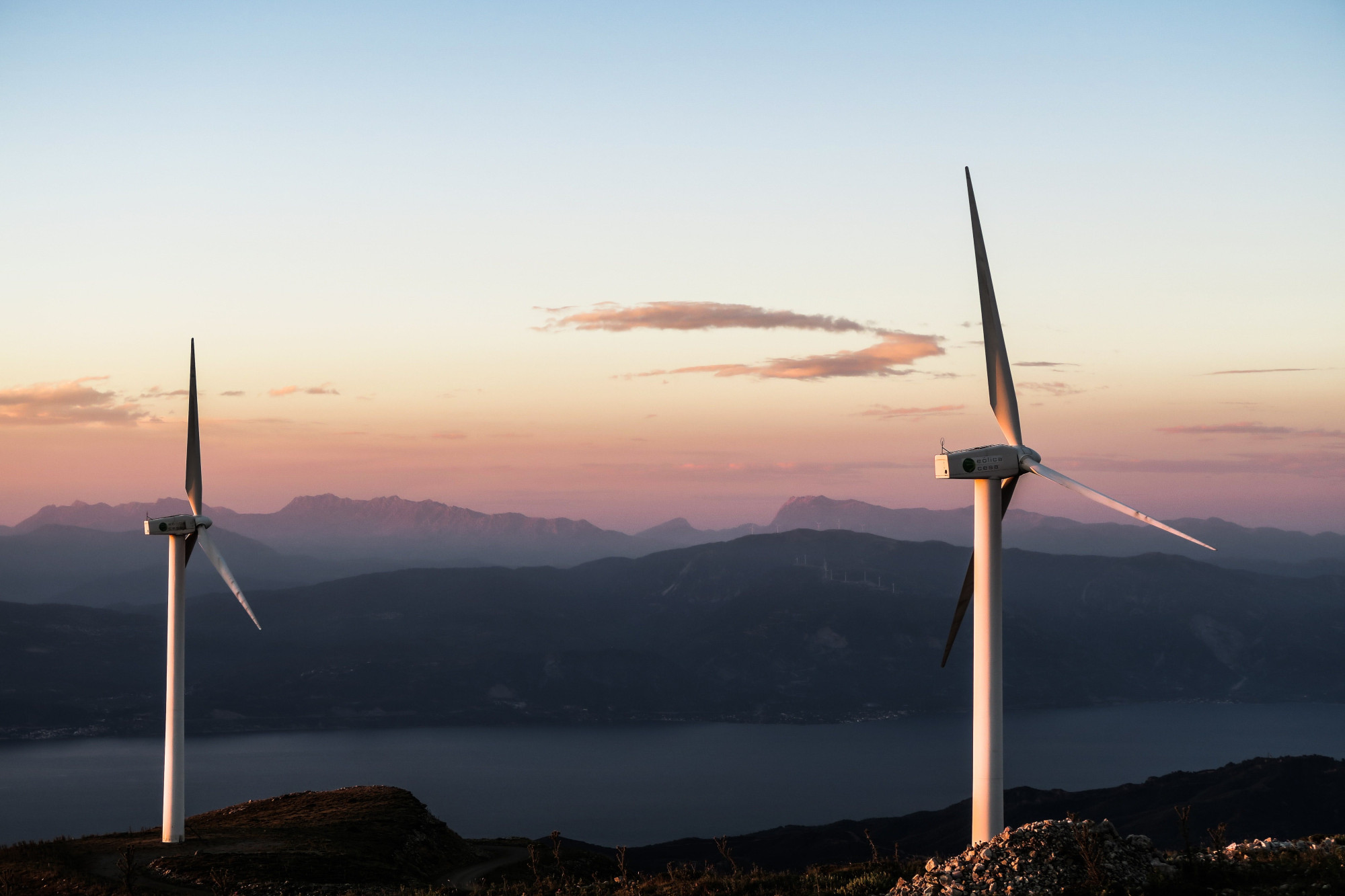A Successful and Just Energy Transition to a Net-zero World Mouez Fodha, Fanny Henriet, and Katheline Schubert

A just and inclusive transition to a net-zero emissions world by 2050 means supporting economically developing countries as well as industries that stand to lose toward a greener future. However, large-scale, internationally coordinated changes and funding have historically proven to be difficult to negotiate, incremental, and uneven. While resistance at the individual, industry, and political levels has remained persistent, the pandemic has shown that international action to address a major crisis is possible.
What is the impact of climate change on resilience?
The impetus for the energy transition comes from the need for revolutionary change to our relationship with energy, on the scale of the Industrial Revolution of the 19th century. We urgently need to turn the page from depleting fossil fuels that are major contributors to climate change to carbon-free energy.
The potentially catastrophic consequences of inaction were made clear in early 2022 by the report of the Intergovernmental Panel on Climate Change (IPCC): the world is on track to reach average temperatures of 1.5ºC above pre-industrial levels within two decades. The consequences of a changing climate and extreme weather events increasingly weigh on the developing world. The costs are likely to increase exponentially and unevenly if urgent action is not taken.
Where resilience is concerned, the IPCC report is unambiguous on the damage to ecosystem resilience from climate change. Essentially, climate change will erode the capacity of ecosystems to function, and to adapt. This in turn erodes societal resilience, especially among the poorest individuals and societies.
The energy transition has the potential to benefit societal resilience and the ability to recover from shocks by reducing damage from climate change – and consequent gains to health and life expectancy – as well as reducing dependence on finite fossil resources. However, this will require ensuring that energy sources are available to all populations, in both developed countries and emerging economies. Transfers of technological and financial resources from richer countries to poorer ones are an essential aspect of the transition.
The energy transition is far from cost-free. There will be direct costs, for example developing infrastructure, and job losses and business shutdowns in fossil fuel-dependent industries. But these costs must be compared with the long-term benefits.
Cost is one barrier to transition. What are the other main barriers to an effective energy transition?
Cost is certainly an issue. There will be winners and losers from the transition, and some of the major costs will be borne by a few sectors, namely the fossil fuel industry and industries heavily dependent on fossil fuels, for example the steel industry. Thus, there is a lot of entrenched opposition to transition and expected resistance. There is also the issue of perception of higher domestic energy costs from green transition, which could lead to political pressure to delay moving away from fossil fuels. This is especially true in an inflationary era, although the surge in oil and gas prices as a result of the war in Ukraine may concentrate more minds on the need for transition.
Another major challenge comes from the need to transition while still meeting the development objectives of the emerging world, which understandably wishes to catch up economically and socially with richer countries. The technologies that would substitute for fossil fuels here, such as hydrogen or carbon capture and storage, have a long way to go to reach maturity. This is linked with the difficulties of financing research and development with long-term aims and potential when investors expect short-term returns.
Finally, there is an imagination barrier. How to measure the costs and benefits of the transition? We tend to see costs and benefits in market terms. What value is attributed to the climate, to health, to social justice? New instruments are needed to measure the non-market values of global commons, that have a clear benefit in societal resilience terms. A transition not just in energy, but to thinking in non-market terms, is a huge challenge in itself.
Building Societal Resilience
This article is part of an AXA Research Fund publication
Read the publicationComing back to the developing world, how can an inclusive energy transition be achieved there? How can we sync the development agenda with the transition agenda?
To facilitate the transition in emerging countries, transfers and solidarity will be necessary – and are justified – because our planet is our common future. The tools exist: financial solidarity funds, fair trade agreements, technology transfer agreements, and debt relief to implement environmental projects.
These scenarios are not new. In late 2021, the UN Climate Change Conference of the Parties (COP26) saw a significant boost to adaptation funding from developed countries to developing countries; the pact at the end of the conference set the goal of doubling annual funding to US$40 billion by 2025, as well as significant funding for locally led adaptation approaches and specifically for adaptation in the least developed countries.
Their implementation at the scale needed, however, is more uncertain. The criteria take into account historical responsibility, ecological debt, and the ability to contribute according to level of development. While it is important to consider all of these elements, it can also cause obstacle and delay.
Briefly, what are the roles of the state, the private sector and civil society in the transition?
The state must provide the impetus, the guidance, and the right incentives, with tools such as setting effective net-zero targets, carbon taxation, tax incentives for sustainable investment and research in clean technologies and developing infrastructure. The private sector should seize the right signals. We have seen BP, a big fossil fuel producer, be quite explicit in expressing ambitions for sustainable energy, although it is actions rather than words that count of course. Finally, civil society can do, and should be helped to do, what it is doing: pushing for change and helping change behavior by focusing on education and ideas and representing those for whom change is a necessity because of climate change and more.
Looking forward, how has the pandemic affected progress and prospects toward an energy transition? And what does this suggest for future shocks?
While coordinated international action to fight the pandemic was lacking in many ways, the pandemic did demonstrate that international cooperation can exist – that countries can work together to tackle a problem. Where the search for effective vaccines was concerned, countries more or less showed solidarity and collaborated to develop and produce immunizations.
The same urgency needs to be applied to the energy transition. Moreover, this crisis has enabled political action to regain the upper hand over economics. Public debt has once again become a virtuous instrument of economic policy. However, there is a downside: countries that are heavily indebted after the pandemic may lose the ability to fight the consequences of climate change effectively. This especially concerns the poorest countries, the ones most exposed to climate effects.
As for other shocks, the war in Ukraine, beyond the immediate human horror, is a huge blow to the energy transition, as the fight against climate change has been pushed off the political agenda and replaced by the objective of counteracting the increase in fossil fuel prices as much as possible.
However, it also highlights the fragility of dependence on fossil fuels in an unstable world and the need to transition away from fossil fuel energy. The hope is that this will give impetus to the transition. To build resilience in the face of future shocks, and the building slow shock of climate change, an energy transition to net-zero emissions is simply vital.
November 2022
Discover research projects related to the topic
Natural Catastrophes
Joint Research Initiative
Spain
Understanding Wildfire Risk: A Local-Scale Assessment Framework in Chile
Wildfire is a significant hazard across the globe, causing extensive economic, ecological and health impacts. While wildfires are common throughout... Read more

Marcos
RODRIGUES MIMBRERO


